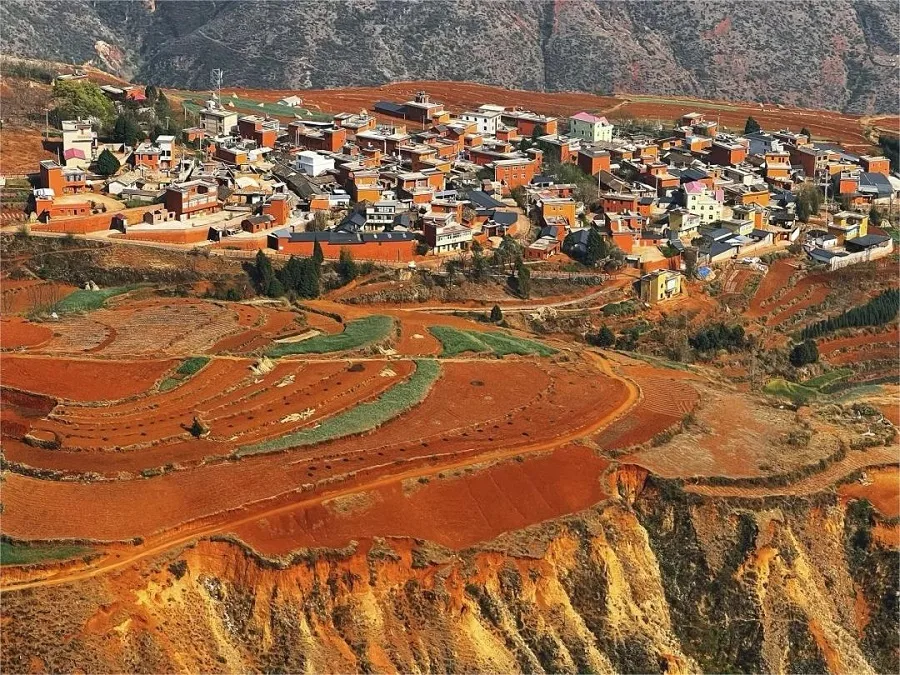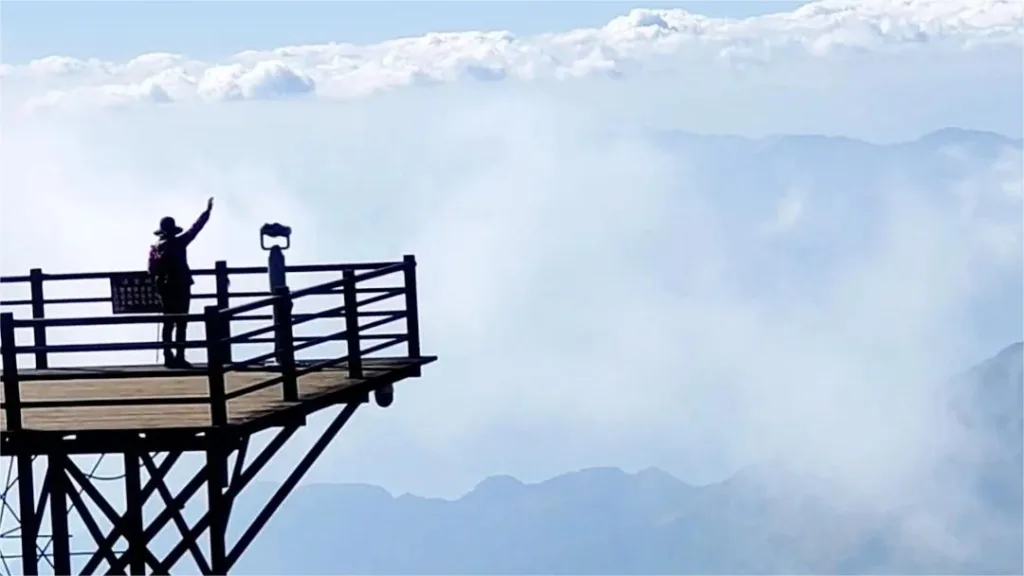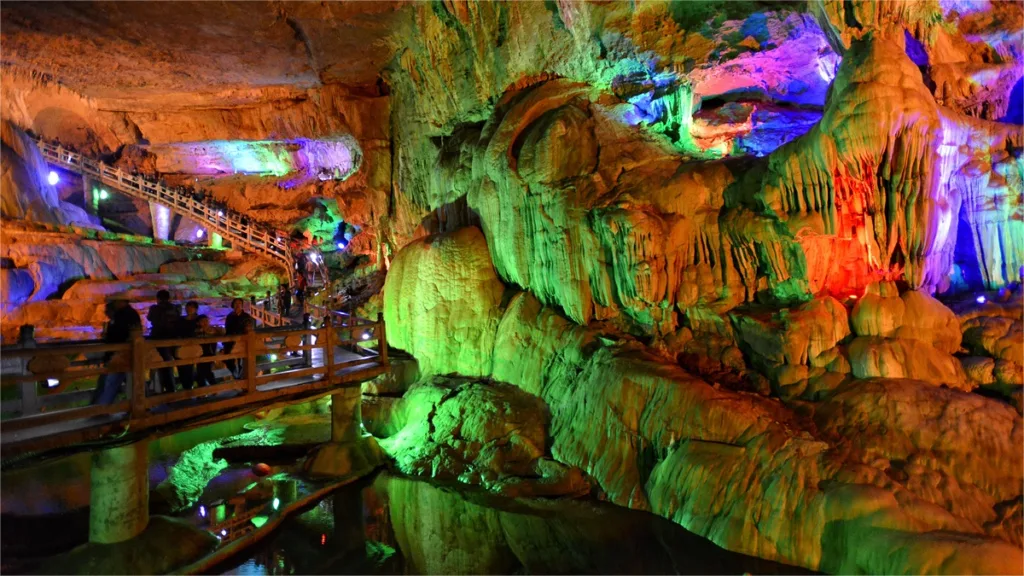Dongchuan Red Land (东川红土地), located in Dongchuan District, north of Kunming City in Yunnan Province, is renowned for its vibrant and picturesque red soil terrains. Situated between 1800 and 2600 meters above sea level, the area’s soil, rich in iron and aluminum with minimal organic matter, gives rise to its distinctive red hue. Often hailed as one of the most spectacular red earth landscapes in the world, the land is divided into patches by fields and crops, creating a mesmerizing mosaic of colors, particularly against the backdrop of the blue sky and white clouds. In recent years, Dongchuan Red Land has emerged as a haven for photography enthusiasts.
One notable feature within the scenic area is the presence of the Sand Pine tree, a member of the Pinaceae family. Legend has it that this ancient tree, known locally as the “Old Dragon Tree,” is over a thousand years old. Despite experiencing periods of apparent death, it has miraculously revived, earning reverence from the local villagers who believe it blesses the surrounding community.
Table of Contents
- Basic Information
- Location and Transportation
- Optimal Seasons for Photography
- Recommended Route
- Vlog about Dongchuan Red Land
- Other Attractions in Kunming Suburbs
Basic Information
| Estimated Length of Tour | 1 day |
| Ticket Price | Free |
| Opening Hours | 24 hours a day throughout the year |
Location and Transportation
Dongchuan Red Land is located northeast of Kunming City in Dongchuan District. It is approximately 250 kilometers from Kunming to the central area of the scenic spot. To reach Dongchuan Red Land from Kunming:
- Take a bus from Kunming North Bus Station (昆明北部客运站) bound for Fazhe (法者), and alight at Huashitou Village (花石头村).
- Take a bus from Dongchuan District Bus Station (东川区客运站) bound for Majie (马街), and alight at Huashitou Village (花石头村).
Optimal Seasons for Photography

The optimal seasons for photography at Dongchuan Red Land are May to June and September to December. Each season offers a unique landscape; in summer, potato flowers blossom and wheat ripens, while autumn sees some fields freshly plowed alongside others adorned with lush green barley or wheat. The distinctive white rapeseed flowers indigenous to Yunnan also bloom, adding to the vibrant palette of colors. Local wisdom suggests that the land is at its most breathtaking three days after rainfall, as the saturated soil glistens under the sunlight, enhancing its vividness.
Recommended Route

The attractions of Dongchuan Red Land are spread out, with a prominent three-way intersection near Huashitou Village (花石头村) serving as a focal point. This intersection connects the village to Dongchuan Red Land Town, Dongchuan District, and Kunming via three main roads, facilitating access to the area’s key scenic spots. The recommended approach for exploring Dongchuan Red Land is to hire a car, with daily rates ranging from 250 to 300 yuan. This allows visitors to cover all three main routes in a day, with the flexibility to stop alongside the road to capture the beauty of the landscape at any moment.
Typical photography routes include catching the sunrise at Damakan (打马坎), followed by visits to Qicai Slope (七彩坡), Jinxiu Countryside (锦绣田园), Le Puao (乐谱凹), and the Old Dragon Tree (老龙树)during other times of the day. Finally, in the evening, head to Luoxia Gou (落霞沟 )to capture the sunset, completing a full day of exploration and photography amidst the stunning scenery of Dongchuan Red Land.




